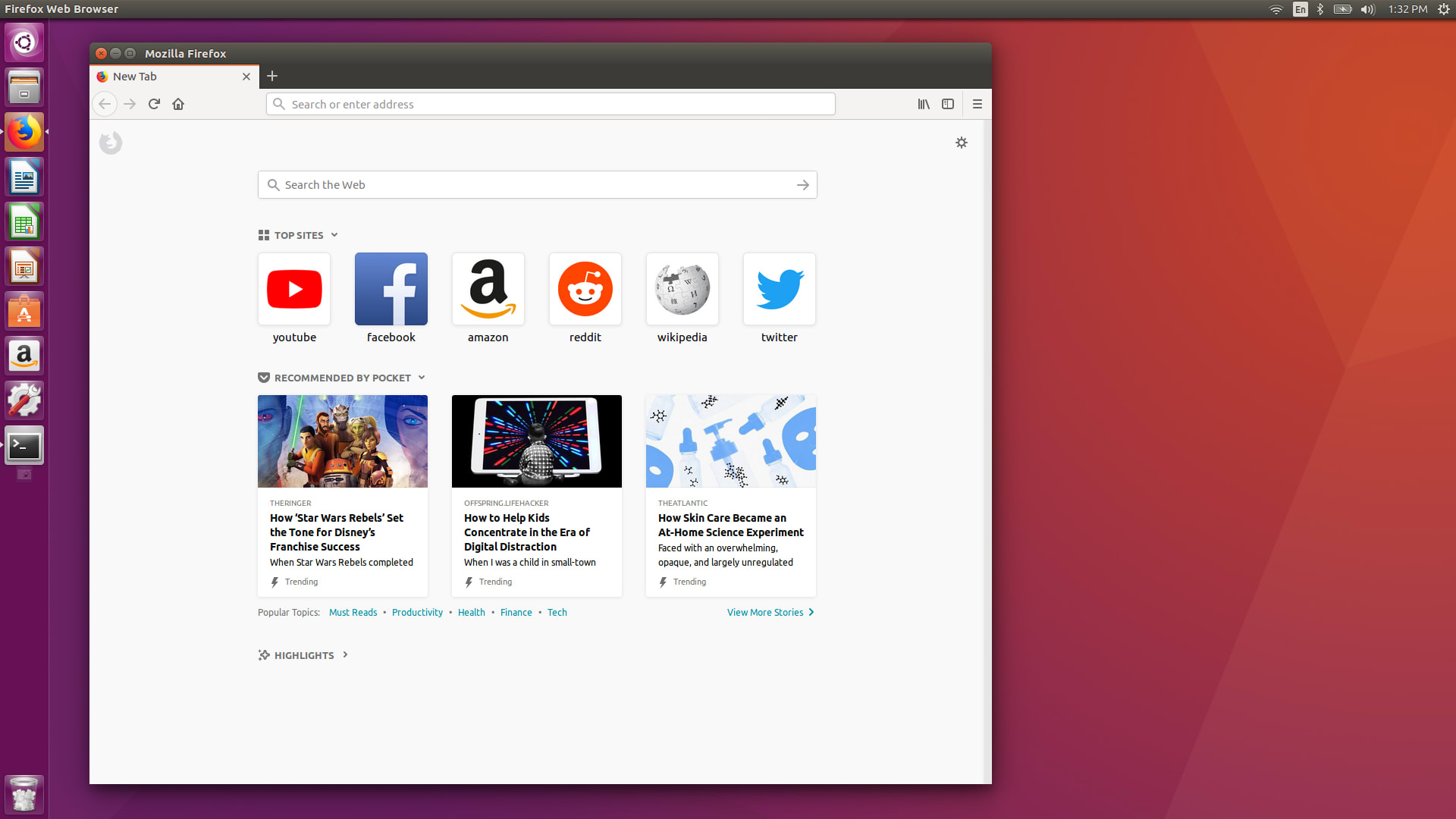
KDE’s Nate Graham reports on the performance gains he got from using web render on his Wayland system, which includes better overall battery life from reduced CPU usage. It’s a switch that does improve the performance of Firefox on most systems - we’re talking ‘ buttery smooth performance at up to 60 frames-per-second‘ here. To be (intentionally) reductive: the feature leverages a system’s GPU to render web content, rather than the CPU as it does at present. As WebRender is written in Rust and uses a very different design approach, we expect to get stability and performance benefits from this switch.”

“WebRender will replace Gecko’s existing compositor, interfacing with Gecko’s main-thread layout code. What is WebRender? I’ll let Mozilla explain: But until that happens you can force enable WebRender on Linux to get the benefits (like reduced CPU usage) right now, no waiting. A quick and easy way to improve the performance of Firefox on Linux is to force enable WebRender.Īt some point in the near future Firefox will make web render the default rendering engine for all users of the browser, on as many systems as possible. Follow Gregg on Twitter send e-mail at or subscribe to Gregg's RSS feed. Gregg Keizer covers Microsoft, security issues, Apple, Web browsers and general technology breaking news for Computerworld. During November, IE had a 63.6% share, while Firefox's was 24.7%. "Will Chrome on Linux and eventually on Chrome OS finally bring Linux usage beyond the 1% range?" Vizzaccaro asked.īut for all of Chrome's gains, it remains far behind both Microsoft's Internet Explorer (IE) - which runs only on Windows - and Firefox, the world's No.
#Firefox for linux on mac driver
Vizzaccaro based his speculation of Chrome as a Linux driver not only on the browser itself, but also on the fact that it's the foundation of Chrome OS, the Linux-based operating system Google hopes to ship on netbooks by this time next year.

Linux's high-water mark in the last two years was 1.17% in May 2009. During November, for instance, Linux had exactly 1% of the OS share. The availability of Chrome may also be the spark that finally pushes Linux's usage share above the 1% mark, where it's hovered for years. With the emergence of Chrome, I'll be curious to see if Chrome will be to Firefox on Linux what Firefox is to IE on Windows.
#Firefox for linux on mac mac
"Firefox currently dominates browser usage on Linux the way that IE dominates Windows systems and Safari dominates Mac systems. "I believe Linux will be the more intriguing arena to watch," Vizzaccaro said. Like Chrome, Firefox is available in versions for Windows, Mac and Linux.Ĭhrome's post-beta jump was even larger on Linux, where Google's browser had a 6.34% share of the open-source operating system's browser market for the week of Dec. Chrome's gains came "fairly equally" from both Safari and Mozilla's Firefox, Vizzaccaro said.
#Firefox for linux on mac mac os x
Last week, Chrome accounted for 1.3% of all browsers used on Apple's Mac OS X operating system, up from just 0.32% during November.

"It appears that Chrome has made a substantial surge in usage market share," Vizzaccaro said in an e-mail.

Chrome's share during the week topped Safari's 4.37%, said Vince Vizzaccaro, executive vice president of Net Applications.


 0 kommentar(er)
0 kommentar(er)
